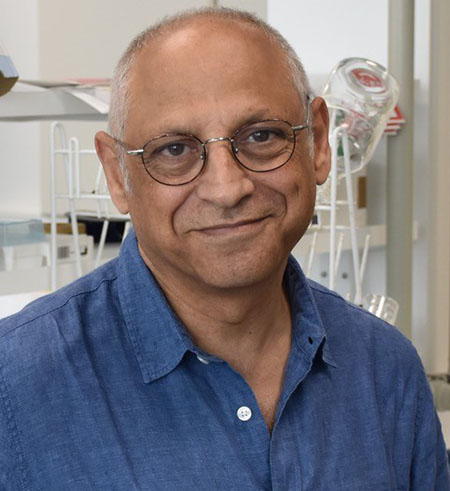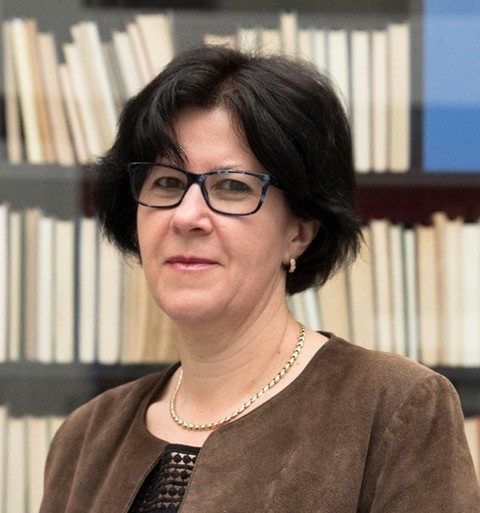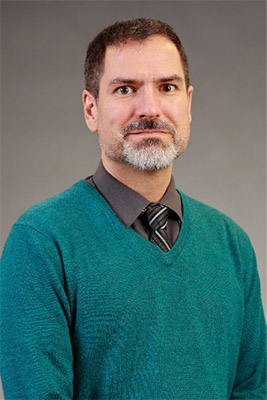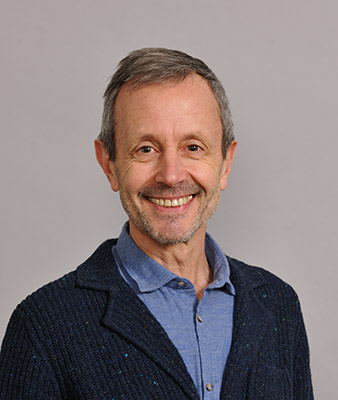Invited pseakers
 |
Prof Elias FATTAL, Institut Galien, Paris-Saclay Getting around the complexity of drug targeting in inflammatory diseases using nanotechnologies: lessons for the future? Elias Fattal earned a pharmacy degree from the University of Paris-Sud in 1983, after which he completed a hospital pharmacy internship at the University of Lille from 1984 to 1986. Upon returning to the University of Paris-Sud, he obtained a PhD in 1990 under Prof. Patrick Couvreur's supervision. After a postdoctoral position with Prof. Francis Szoka at the University of California, San Francisco (1990–1991), he was appointed associate Professor in 1992, becoming a full Professor in 2000 at the University of Paris-Sud. Prof. Fattal led the CNRS/Institut Galien Paris-Saclay from 2010 to 2019. He has significantly contributed to the drug delivery field, particularly using nanotechnologies for targeted, local drug and nucleic acid delivery. He has co-authored over 320 publications and book chapters. His recent research has focused on designing nanoparticle-based delivery systems for anti-inflammatory drugs and nucleic acids. One of his 14 patents resulted in the development of Calixarene® Cevidra, a nanoemulsion used to treat external radionuclide contamination. Prof. Fattal has received numerous awards for his work, including recognition from the French Academy of Sciences in 2016 and the Maurice-Marie Janot Award in 2018. He serves on the editorial boards of several scientific journals. He is also a member of the French Academies of Pharmacy and Medicine and a fellow of the Controlled Release Society and the European Academy of Sciences. |
 |
Dr Valentina CAUDA, Turin, ITALY Rational Design of bio-mimicking nanoparticles as remotely triggered nanotheranostic platform for cancer treatment Valentina Cauda is Full Professor at the Department of Applied Science and Technology (DISAT) of Politecnico di Torino (Turin, Italy) teaching classes of Nanotechnology and Nanomedicine. She leads the TrojaNanoHorse lab (in brief TNHLab) founded by an ERC Starting Grant project in 2016 and she is co-founder of two biomedical Start-ups, U-Care Medical srl and Hematica srl. She is PI of several national and EU projects, she holds 8 patents and is author of >170 scientific publications. Her main research topic is about theranostic nanomaterials, from wet chemical synthesis, chemical functionalization and physical-chemical characterization of metal oxide nanomaterials to drug delivery, stimuli-responsive activation, tumor cell targeting, and bio-imaging. These nanoparticles are made biomimetic by coating them with either artificial and natural derived phospholipids, in particular those originating from extracellular vesicles, and then re-engineered for becoming advanced drug delivery and nanoimaging vehicles. More info: www.tnhlab.polito.it. |
 |
Prof Kevin BRAECKMANS, Ghent, BELGIUM Lighting the way: nanoparticle-enhanced photoporation for safe and effective cell transfection in regenerative medicine and cell therapy Kevin Braeckmans began his academic journey in physics before earning a PhD in pharmaceutical sciences at Ghent University, Belgium. Early in his career, he developed a strong passion for biophotonics technologies aimed at advancing drug delivery and diagnostics. In 2008, he was appointed professor at Ghent University, where he leads the Bio-Photonics Research Group. His research focuses on the intersection of light and nanotechnology, particularly light-triggered drug delivery and related therapeutic applications. In recognition of his innovative work, he received a prestigious ERC Consolidator Grant in 2015 and was promoted to full professor in 2018. Prof. Braeckmans is a Clarivate Highly Cited Researcher since 2022, co-author of over 250 scientific publications, and co-inventor on 17 patent applications. In 2021, he co-founded the spin-off company Trince, where he serves as Chief Scientific Officer, aiming to translate academic breakthroughs into real-world biomedical solutions. |
 |
Prof. Maike WINDBERGS, Frankfurt, GERMANY Label-free Raman microscopy for investigating drug delivery systems and their fate in human tissues Maike Windbergs Maike Windbergs is a full professor for Pharmaceutical Technology and the director of the Institute for Pharmaceutical Technology and Biopharmaceutics at Goethe University, Frankfurt am Main, Germany. She received a PhD in Pharmaceutical Technology and spend several research stays at leading international universities, as Harvard University, USA, Twente University, The Netherlands and the University of Helsinki, Finland. Her research interests are focused on novel drug delivery approaches and their effective translation into clinics. She uses Raman microscopy to investigate human cells and tissues as well as drug delivery systems and their interactions with biological environments. |
 |
Prof. Benoit BUSSER, Grenoble, FRANCE What can LIBS bring you in nanomedicine? Benoit Busser (PharmD, PhD) is Full Professor of Biochemistry and Cancer Sciences at the Faculty of Pharmacy, Univ. Grenoble Alpes (UGA), and Senior Clinical Biochemist, heading the Point-of-Care Testing Unit at Grenoble Alpes Hospital. His early research focused on cancer cell signalling and mechanisms of resistance to targeted therapies. He later extended his work to the biomedical implications of metal exposure. During a research mobility in Univ. Lyon, he contributed to the development of laser-induced breakdown spectroscopy (LIBS) for elemental tissue imaging. In 2024, he installed the first hospital-based LIBS microscope and launched a clinical trial evaluating its ability to detect and localise metals in tissues from patients with lung diseases. His research was recognised in 2021 with a junior membership at the Institut Universitaire de France (IUF). |
 |
Dr Eva JAKAB-TOTH, Orléans, FRANCE Towards safer and more specific MRI probes Eva JAKAB TOTH is a coordination chemist interested in the design and characterization of metal complexes for Magnetic Resonance Imaging. After a PhD at the University of Debrecen, Hungary, she occupied research positions at EPFL Lausanne, Switzerland. In 2005, she became CNRS research director at the Centre of Molecular Biophysics in Orléans, France ; she was the head of this institute between 2012 and 2021. Her recent research interests involve biomarker detection and the development of manganese chelates as MRI agents. Her work has been recognized by various prizes, including the CNRS Silver Medal, the Grand Prix Achile Le Bel of the French Chemical Society or the Torsten Almen Award for Pioneering Contrast Media Research. |
 |
Dr Gregory FRANCIUS, Villers-Lès-Nancy, FRANCE Designing the next generation of anti-staphylococci bacteriophage-based biomaterials Grégory Francius is a CNRS research director at LCPME (Nancy, France), specializing in nanobiotechnologies at the interface of materials science, microbiology, and biophysics. His research focuses on drug delivery systems, theranostics, and biocompatible materials for implants and prosthetics. He employs high-resolution techniques such as atomic force microscopy and spectroscopy to investigate bacterial adhesion, biofilm development, viral entry, and nano–bio interactions. Francius has authored over 120 peer-reviewed publications and book chapters. He has coordinated and contributed to nationally and regionally funded projects (ANR, CNRS, Region Grand Est, and University of Lorraine) targeting microbial control and surface functionalization. He is an active reviewer for high-impact journals and serves as an expert evaluator for national and European scientific funding agencies. |
 |
Prof. Nicolas BERTRAND, Laval, CANADA PEGylated nanomedicines, antibodies and the complement, insights from animals and humans. The incorporation of polyethylene glycol (PEG) in nanomedicines modifies their colloidal stability and their pharmacology. For a few years, the community has acknowledged that animals and humans can develop immunoglobulins that bind the polymer. However, questions remains on the causes and consequences of these antiPEG antibodies. In this presentation, we will explore the biological mechanisms driving the immunogenicity of nanomedicines. Using recent data obtained from animal models and humans, we will characterize the humoral immune response, and posit on the possible consequences of antiPEG antibodies. Nicolas is a pharmacist by training. He received his PhD from University of Montreal under the supervision of Prof. Jean-Christophe Leroux, and post-doctoral training at the Massachusetts Institute of Technology in the laboratory of Prof. Robert Langer. In 2015, he joined the Faculty of Pharmacy of Université Laval, as an assistant professor. He was promoted to full professor in 2024. His laboratory focuses on understanding the pharmacology of nanomedicine, specifically how nanomedicine interact with complex biological environments. His team has developed various tools to monitor the pharmacokinetics of liposomes and polymer nanoparticles in rodents. The laboratory is also very interested in understanding the intricate interactions between nanomaterials and the immune system. |
 |
Dr Pierre WILS, Sanofi Paris, FRANCE Developing mRNA Vaccines: From Platform to Products Pierre Wils is currently Global Advisory Lead in the mRNA Center of Excellence of Sanofi. His expertise is in pre-formulation and formulation development for both small molecules, and biotherapeutics including gene delivery technologies. He has held multiple positions in the CMC space, progressing several compounds to NDA and BLA filing and approval. Developing mRNA Vaccines : From Platform to Products The approval of mRNA vaccines has taken benefit of the considerable knowledge accumulated in the design, development and production of mRNA and Lipid Nanoparticles. The mRNA technology brings an additional layer of complexity vs. classical platforms, as it requires a multifactorial integration of multiple scientific and technical dimensions. It is therefore particularly adapted to the use of AI/ML tools for deep understanding of the multifactorial elements that drive performance, and for accelerating next-generation platform development. This presentation will exemplify how in silico modeling & optimization can be used to increase probability of success and to reduce cycle-time of mRNA vaccines development. |
 |
Dr Ine LENTACKER, Ghent, BELGIUM Clinical translation of mRNA Galsomes – a glycolipid adjuvanted mRNA vaccine Dr. Lentacker is a pharmacist and obtained her PhD in Pharmaceutical sciences at Ghent University in 2009. Currently, she is a principal investigator in the Ghent Research Group on Nanomedicines where she leads a research team at the interface of material design, drug delivery and immunology with a major focus on mRNA vaccines and adjuvant formulation. |
 |
Dr. François LUX, Lyon, FRANCE Functionalization of ultrasmall nanoparticles François Lux is a former student of ENS Lyon and a research professor at the Institut Lumière Matière (UCBL). His work focuses on nanomedicine and biomaterials, with a strong commitment to clinical translation. He has contributed to the development of AGuIX nanoparticles to enhance radiotherapy and chitosan-based chelating polymers for metal homeostasis regulation and biomolecule delivery. |